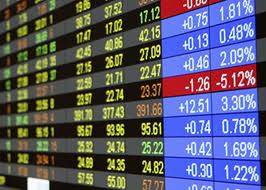 There are a lot of reasons for buying and selling financial securities, which is why so many investors prefer active management by financial advisors for their portfolios. Here are the 4 primary reasons:
There are a lot of reasons for buying and selling financial securities, which is why so many investors prefer active management by financial advisors for their portfolios. Here are the 4 primary reasons:
- Remove bad investments from your portfolio
- Rebalance your portfolio by reducing your allocation to higher performing securities and increasing your allocation to lower performing securities
- Lock-in capital gains
- Free-up capital to make new purchases
Turnover
The buying and selling of securities in your portfolio is also called turnover. You may have high turnover rates if your financial advisor is actively managing your portfolio. Or, you may have low turnover rates if you are invested in Exchange Traded Funds, index funds, or your advisor is using a passive investment process.
For example you have a $500,000 portfolio. The market value of your advisor’s buys and sells in one year is $100,000. You have a 20% turnover rate. Compare that to $500,000 of buys and sells that equates to a 100% turnover rate.
Transaction Charges
In the past, you paid transaction charges for the sale and purchase of securities. Low turnover equated to low transaction expenses and high turnover equated to high transaction expenses. Transaction expenses are also called commissions because your advisor received a commission for each buy or sell that he initiated. The more transactions in your portfolio the more money your advisor and his firm made.
Fixed Fees
However, broker/dealers did not like the unpredictable nature of transaction charges. They could not predict the amount of money they would make from your assets for future transactions. Their solution was to change their pricing model to a fixed or asset-based fee. Instead of charging a transaction charge for each buy or sell they began charging a fixed fee for a specified number of transactions or they expressed the fee as a percent of your assets.
Financial advisors and their firms had their predictable revenue stream. They no longer had to create transactions to get paid.
Churning
In a transaction fee environment, high turnover produces the most revenue for financial advisors and firms. The more buys and sells the more money they make. Excessive turnover, also know as churning, occurs when the advisor and his firm are initiating transactions for the sole purpose of maximizing their own income.
Reverse Churning
It is just the opposite in a fixed fee environment. Low turnover rates make financial advisors and firms the most money. That’s because the fee is no longer based on number of transactions. It is based on a percent of your assets. Therefore turnover is an expense and not a source of additional revenue. For example, you agree to pay a 25 basis point (one quarter of one percent) fee on your $500,000 portfolio. The advisor and his firm make $1,250 whether or not there are any transactions.
Hidden Financial Risk
Reverse churning is extremely low turnover rates that maximize the profitability of the fixed fee for the advisor’s firm. This creates a major financial risk when bad investments are not sold in a timely manner and new, higher potential investments are not added to your portfolio.
Other posts from Jack Waymire
Paladin’s Registry of Financial Advisors is a Free Service for Investors
The world’s first financial advisor directory was the Yellow Pages®. All you had to do was thumb through...
How to Find the Best Financial Advisors
Your first step is to determine the criteria you will use to identify and select the best financial...
What is an Investment Performance Benchmark?
A Benchmark is a performance goal. Your advisor is paid to produce results that beat the performance of...





